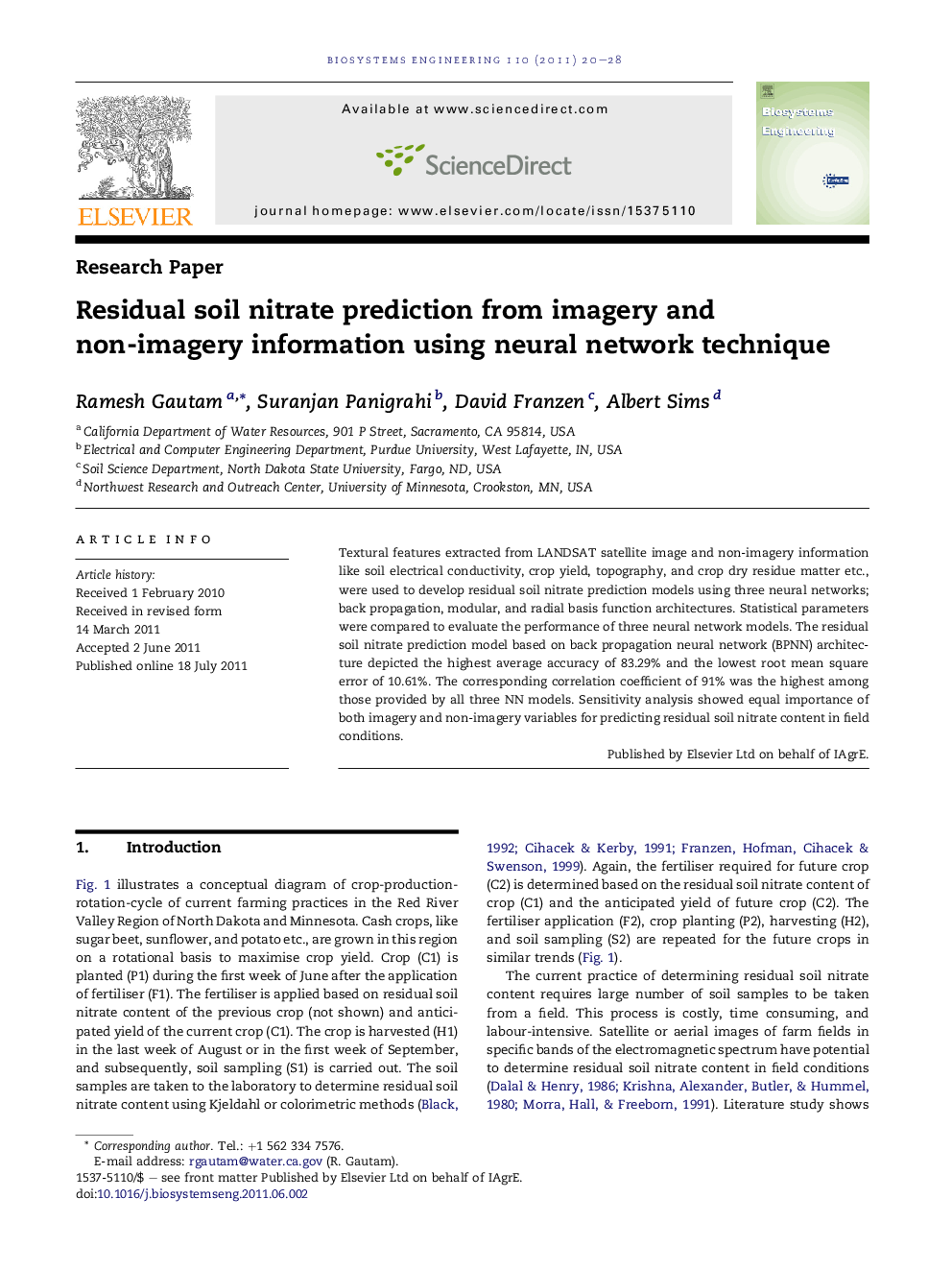| Article ID | Journal | Published Year | Pages | File Type |
|---|---|---|---|---|
| 1711676 | Biosystems Engineering | 2011 | 9 Pages |
Textural features extracted from LANDSAT satellite image and non-imagery information like soil electrical conductivity, crop yield, topography, and crop dry residue matter etc., were used to develop residual soil nitrate prediction models using three neural networks; back propagation, modular, and radial basis function architectures. Statistical parameters were compared to evaluate the performance of three neural network models. The residual soil nitrate prediction model based on back propagation neural network (BPNN) architecture depicted the highest average accuracy of 83.29% and the lowest root mean square error of 10.61%. The corresponding correlation coefficient of 91% was the highest among those provided by all three NN models. Sensitivity analysis showed equal importance of both imagery and non-imagery variables for predicting residual soil nitrate content in field conditions.
► Landsat imagery and other information used to predict residual soil nitrate content. ► Three neural networks were tested: back propagation, modular, and radial basis function. ► Prediction using back propagation had greatest average accuracy. ► Both imagery and non-imagery information was important for prediction.
